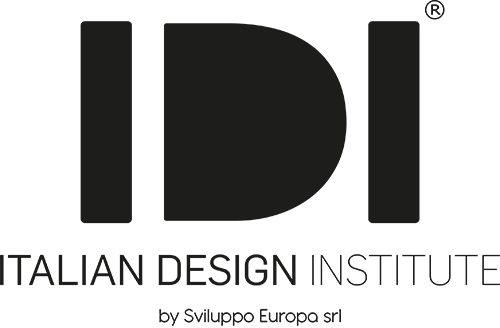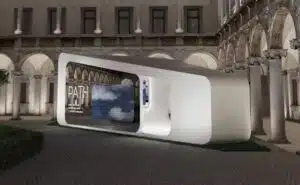[vc_row][vc_column][vc_column_text]Questa è la storia dell’Italia migliore, di un uomo che con la forza delle proprie visioni ha plasmato un intero settore industriale, di una famiglia che è stata capace di generare eccellenza generazione dopo generazione. Il car design di oggi non esisterebbe, se Battista Farina non fosse nato.
Battista Farina was born in Turin in 1893. Nicknamed Pinin (Giuseppino) from an early age because of his extraordinary resemblance to his father Giuseppe, began at only eleven years of age working with his older brother Giovanni in a small body shop called 'Stabilimenti Farina'. At the outbreak of the Great War, the Farina brothers took thecontract for the construction of the Aviatic aircraftan aircraft for the pilot school. The work is carried out with such expertise that it receives a solemn commendation by the Air Force for the quality of construction. In 1920 Battista 'Pinin' Farina travelled to the United States to study the cutting-edge production methods of US industry. In Detroit he is received by Henry Ford himself, who was won over by Farina's work and personality, so much so that he proposed him to stay in Detroit and work for its industry. An offer that the Turinese politely declined, preferring to return to Italy.
'Pinin' Farina is a man of his time, seduced by the idea of progress, technical innovations and above all speed. He also tries his hand as a racing driverHe competed in the uphill race 'Aosta-Gran San Bernardo' in 1921 and showed uncommon talent, as evidenced by the best time over all: a record that would stand for eleven years. In 1930, thanks to funding from an aunt of his wife and the financial support of Vincenzo Lancia, opening a factory in Corso Trapani. The newly founded Carrozzeria Pinin Farina was set up with the aim of designing and building special bodies for custom-built carsbut also to produce some special models in small series (7-8 units per day). The company soon became known for its quality of craftsmanship and for bodies designed and built on mechanicals produced by partner Vincenzo Lancia, Alfa Romeo, Hispano-Suiza and Fiat. The workforce numbered up to 500.
Italy's entry into the war in 1940 put a freeze on Pinin Farina's industrial projects, which were forced to convert its production manufacturing military vehicles. At the same time he began to supporting resistance, supplying Piedmontese partisan formations with means of transport, spare parts and fuel. At the end of the war, activity could finally resume as originally intended and the company began to sign the first models.
In 1946 'Pinin' Farina designs and produces the Cisitalia 202a car of such elegance and essential beauty that it will later be exhibited at the MOMA in New York as dynamic sculpture. In this period, the first important collaborations with foreign car manufacturers, such as Peugeot and Nash, a Wisconsin car manufacturer renowned for its high quality and historic innovations, such as the first load-bearing body models, the first seat belts and the first air-conditioning system. In 1952, 'Pinin' Farina officially presented the Nash Ambassador designed by him and the Nash-Healey designed and built in small series in the Turin factory, he returned to the USA, where he was treated like a star. For the first time in the history of the US automobile industry car design is elevated to a distinctive feature of a carand its author's signature becomes the star of the promotional campaign. The Turin coachbuilder's success is now global.
In 1958 Pinin Farina - by now a real brand name, pronounced in one breath - is a well-established player on the Piedmontese and Italian industrial scene and its volume of business obliges the top management to look for a larger production facility. The company therefore moved to Grugliasco, where it completed the transformation from artisan company to full-fledged industrial enterprise. In the early 1960s, the Alfa Romeo Giulietta Spider and later the Fiat 124 Spider were mass-produced.
In 1961, the President of the Republic Italiana Giovanni Gronchi in person authorised, for all civil and legal purposes, the change of surname from Farina to Pininfarina. In the same year the second generationhis son Sergio took over the management of the company. Sergio Pininfarina's imprint on the company's strategies was immediately felt. Just as Battista had been a son of his time, so too Sergio intuits and anticipates the major themes that will dominate the automotive industry in the years to come. Already the creator of the historic meeting between Father Baptist and Enzo Ferrariassociation that would later spawn more than 100 dream car models in almost 65 years of collaboration, Sergio devoted himself to studying the interaction between car design and aerodynamics, building the first 1/1 scale wind tunnel in Italy.
In 1966 Battista Pininfarina died in Lausanneone month after inaugurating the new Study and Research Centre. The condolences of the Italian industrial and cultural world are immense. As is the list of honours received during his lifetime by this giant of the 20th century. We recall the main ones: Cavalierato del Lavoro of the Italian Republic; appointment as Honorary Member of the Royal Society of Arts in London; decoration bestowed on him by King Baudouin of Belgium; Grand Prix Nazionale Compasso d'Oro; appointment as 'Honorary Member' of the Society of Engineers and Architects of Turin, which subsequently awarded him the 'Turin Prize'; recognition by the Société d'Encouragement pour la Recherche et l'Invention in Paris; 'Grand Cross with Plaque' by the Sovereign Military Order of Malta; degree 'Honoris Causa' from the Faculty of Architecture of the Turin Polytechnic; honorary citizenship conferred by the Mayor of Detroit, Michigan, USA.
Sources: Pininfarina.co.uk[/vc_column_text][/vc_column][/vc_row][vc_row][vc_column][mk_fullwidth_slideshow padding=”0″ images=”6240,6239,6238,6237,6236,6235″ stretch_images=”true”][/vc_column][/vc_row][vc_row][vc_column][mk_button dimension=”outline” corner_style=”full_rounded” size=”medium” icon=”mk-icon-home” url=”/” align=”center” margin_top=”30″ margin_bottom=”0″ margin_right=”0″]Torna alla Home[/mk_button][/vc_column][/vc_row]




